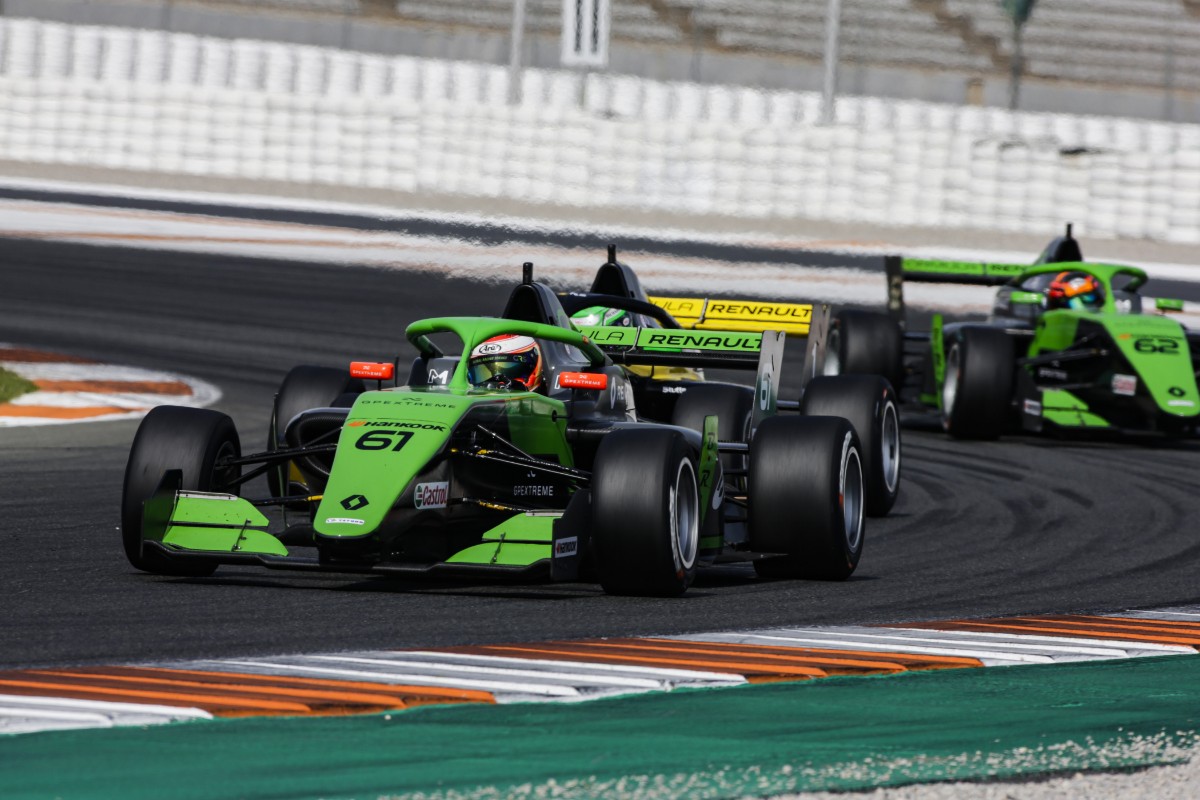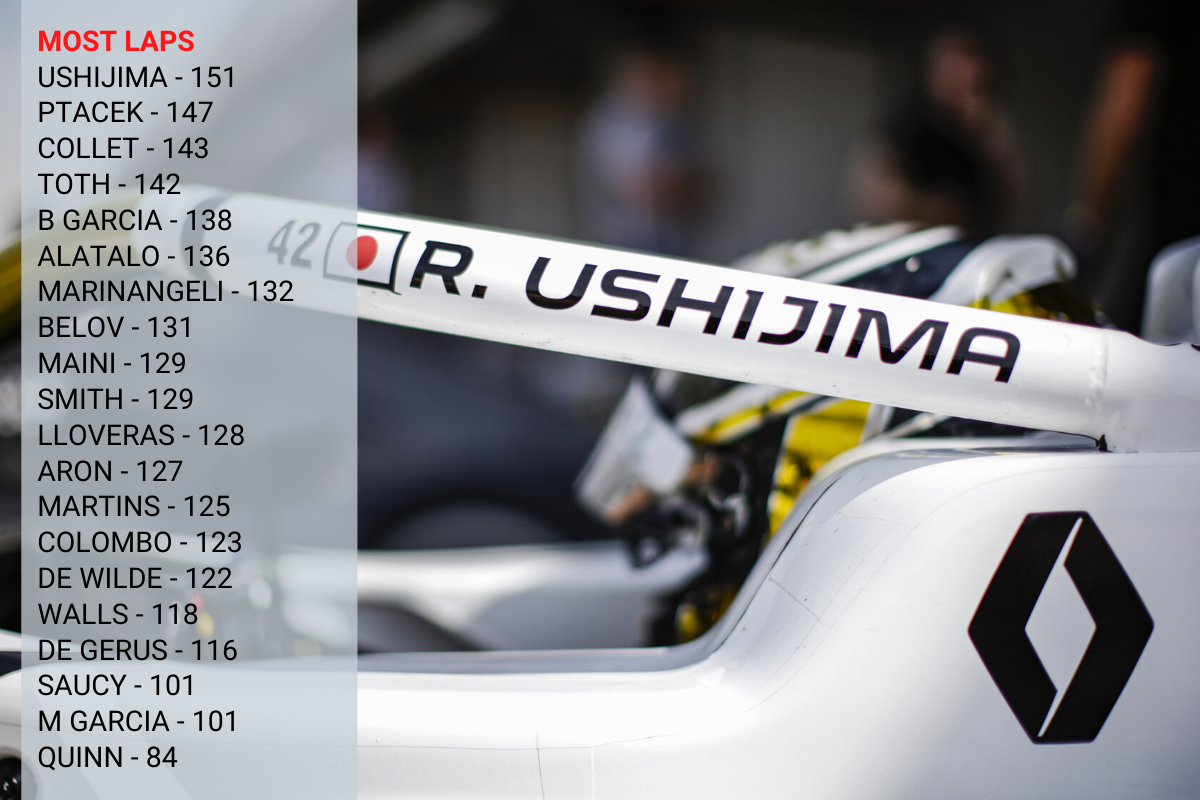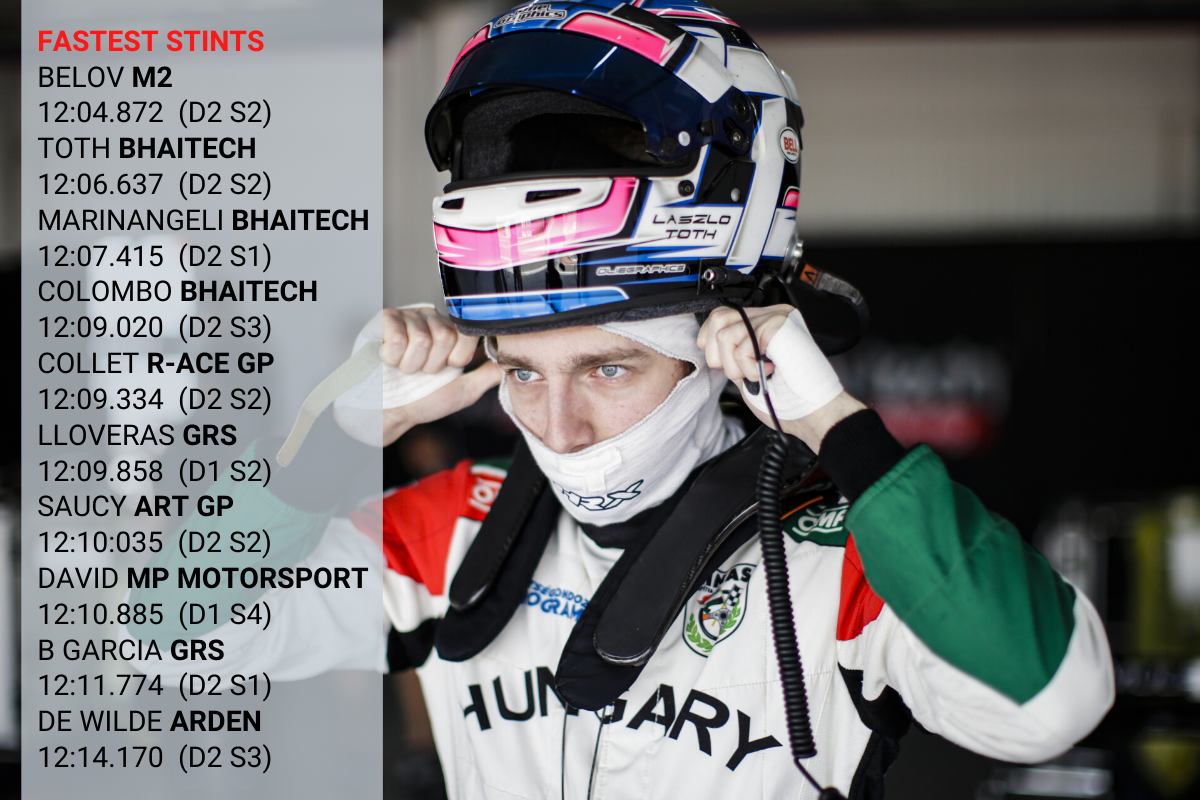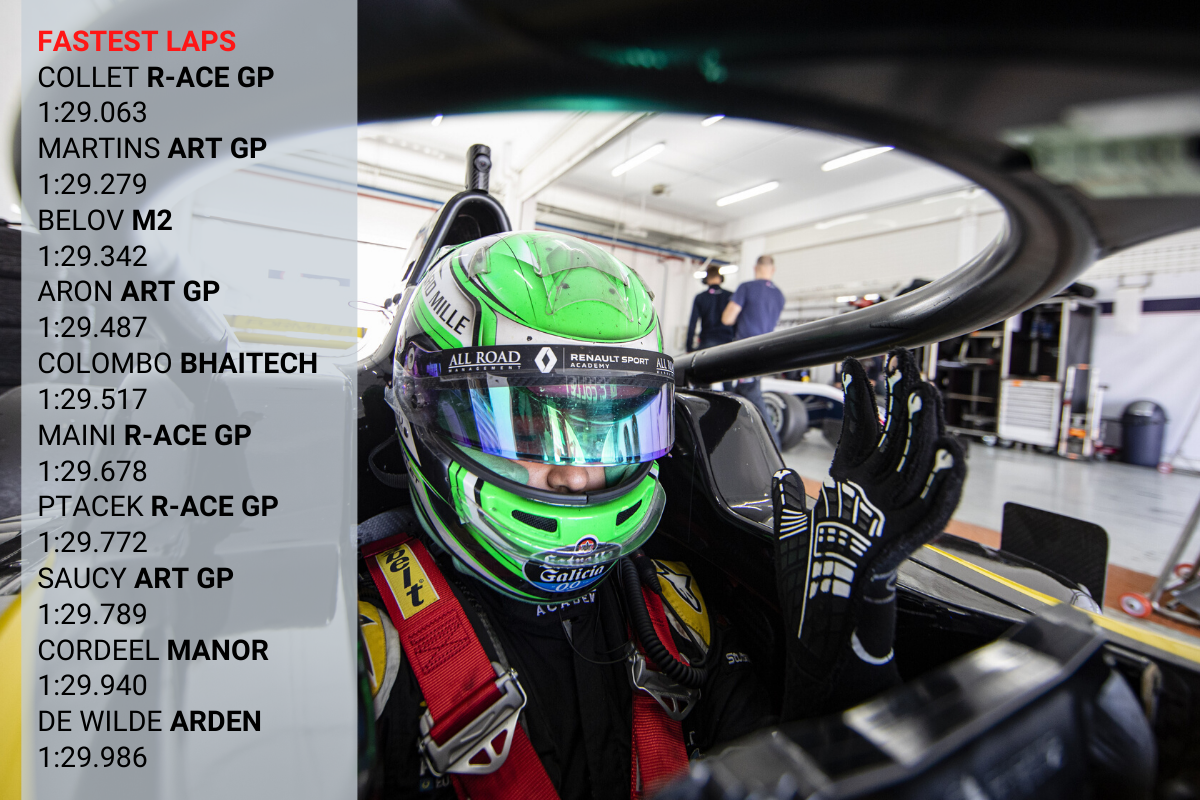
Photo: Dutch Photo Agency
Delving into the data from the sole pre-season Formula Renault Eurocup test brings up interesting trends
Across two days and four sessions each at Valencia this March, the Formula Renault Eurocup completed what turned out to be its only pre-season test of 2020 before the coronavirus pandemic came into play.
There were some mechanical changes brought in during the off-season, focused mostly around the 1.8-litre turbocharged Renault engine the championship uses and its power delivery. Castrol is providing lubrication products that could further improve performance, and Hankook’s new tyre compound is claimed to be “up to two seconds per lap” up on its 2019 tyre.
The look of the grid has changed too, with ART Grand Prix returning to the series after a 16-year break to almost certainly add to its one race win with IndyCar champion Simon Pagenaud, and Global Racing Service has grown its efforts and hired ex-Ferrari man Luca Baldisserri as its chief engineer. He held engineering and managerial roles at the Formula 1 team and its junior programme.
Fernando Alonso’s own team, which moved into the Eurocup as it switched to regional Formula 3 regulations last year, has also ended its Drivex School association to be run by revived MP Motorsport offshoot Manor Competition.
One other coronavirus-caused change is the calendar, which is now set to begin with races at Monza and Imola in July.
The virus shortened the pre-season schedule to just the Valencia test, which severely limits what can be taken from the laps that were set. Unlike Formula 2, where having a single test before the opening round was the plan all along, the Eurocup teams were expecting further tests with programmes tailed for each.

This is especially evident when it comes to long run data, which is harder to find, interpret and compare between drivers at Valencia. Arden drivers Reshad de Gerus and Ugo de Wilde both did 22-lap runs, the equivalent of a race distance, but across the 26 drivers that tested there were few who even completed that many laps in a session.
Every driver completed runs lasting at least eight laps, so Formula Scout has taken data from these to calculate the closest thing to what can be called a ‘race pace’. The appearance of slow traffic and yellow flags is not separated from this data, and there were several stints recorded by drivers that looked worse than they actually were due to one anomalous lap. Where proper runs did last longer than eight laps, it’s the fastest eight consecutive laps within that dataset that has been used.
The track rubbered in across the two days, increasing the grip level and making long runs more suited to the end of the test.
M2 Competition’s American-Japanese teenager Reece Ushijima was the least experienced driver going into the test, having made his car racing debut in Formula Ford 1600 last November, and perhaps unsurprisingly set the most laps at Valencia.
The Belgo-Kiwi squad, entering its sophomore Eurocup season, also racked up a lot of miles with likely signing and SMP Racing protege Mikhael Belov. Despite only running its third car for one day for W Series racer Fabienne Wohlwend, M2 still set more laps than all but reigning champion team R-ace GP and surprise package Bhaitech.
Those three teams reaped the benefits of spending more time on track when it came to the timesheets. The five fastest eight-lap runs were shared between them, with Belov the fastest by 1.765s from Bhaitech’s Laszlo Toth and an average pace advantage of 0.22s per lap. It was a representative run from Belov, set when many other cars were on track and at the sunniest part of the day, during a stint that lasted 16 laps in total.

Bhaitech’s other two drivers Nicola Marinangeli and Lorenzo Colombo were next best, on average 0.318s and 0.519s per lap off of Belov’s pace. Intriguingly, the top three were all Italian F4 graduates and not exactly the drivers that would have been expected to be at the front. Belov did admittedly finish fourth in the points last year with Bhaitech, but his team-mate Marinangeli was a pointless 29th and Toth’s half-season resulted in 38th.
But does their previous form make the testing results any less representative? Bhaitech finished ahead only of the minnow Spanish teams in last year’s Eurocup standings, while Colombo finished fourth in the points and won races with MP Motorsport.
“I must say that the engine developments make the car nicer to drive,” Colombo said during the test. “I already feel comfortable with Bhaitech. I will help them improve their car as much as possible before the first race of the season.
“We started from a good base on this circuit that everyone was discovering and I feel this team has enormous potential. I hope we can continue this progress, but I’m quite positive.”
Rather than looking at drivers, maybe a team average would be a better summary of performance with the already reduced accuracy of comparable eight-lap runs rather than 15 or more. In that regard, Bhaitech’s trio is till top by 6.033s (or 0.754s per lap) over the returning ART. Interestingly, if the times for GRS and M2’s third cars that only ran for one day are taken out of the equation, then both of them are clearly ahead of ART. M2 is just 0.285s from Bhaitech, and GRS is 0.391s behind.
Clearly Bhaitech, GRS and M2 have all upped their game, and ART has brought in its experience from other categories to immediate effect – as well as having a crack line-up of drivers – but in truth the competitive picture is still too muddy with the comparable data at hand when it comes to estimations of ‘race pace’.
Speed over one lap may be the better, or only, parameter that can be taken from testing to form predictions for the season ahead, and that paints a picture where returning talents Caio Collet (R-ace) and Victor Martins (ART) are title favourites.

Martins was runner-up last year with MP, and lost Renault junior status due to his title loss. There’s a chance to regain that by becoming champion in his third season, and despite getting very quickly up to speed with a ‘new’ team it is likely that ART still has a large room for achievable improvement once it actually starts to race with the car.
In the test, Martins set a laptime 0.216s short of Collet’s best. That in itself is no surprise given Martins took nine poles last year, but his less experienced team-mates Paul Aron and Gregoire Saucy were also immediately on the pace. Collet’s team-mates, fellow sophomores Kush Maini and Petr Ptacek, were in the same ballpark. Outside of those two teams, only Belov and Colombo looked capable of matching.
Collet also set the fifth fastest eight-lap run, and it’s a fair bet to say that the reigning rookie champion will be fighting for the overall title this year as well as highest placed returnees Martins and Colombo. The Renault junior believes R-ace’s pick of experienced drivers has put it in a better position than its rival teams heading into the season.
“This year, the team can count on three experienced drivers and Petr, Kush and I work very well together. The atmosphere is great and we took a big step forward,” Collet explained. “I am very pleased with how today went, but it is only testing. However, if we keep this momentum going, I think we’ll have everything we need to be in the race for the title.”
M2’s Toyota Racing Series experience with the New Zealand series’ similar car over the European winter likely helped its test form, and Belov could be a title contender in a way that fellow SMP protege Robert Shwartzman failed to be in his first Eurocup season once he actually confirms his participation in the championship.
If Martins’ pace is still some way from where ART is capable of running at, then on that basis his team-mate and Mercedes-Benz junior Paul Aron should be another rookie who could be fighting at the front. His long runs were consistently among the fastest in each session, even if his best effort was bettered by 10 drivers across the test.
“I struggled to focus on my driving early on before getting it sorted from one session to the other and the last one [on day one] was particularly good on new tyres,” an encouraged Aron said at the time. “I think we have a lot of room to improve as I put in my best lap shortly after the peak in tyre performance while also having to deal with traffic.”
The question of who really is quickest can only be answered once the season is underway, which can’t come sooner…
